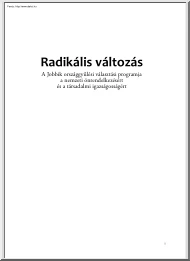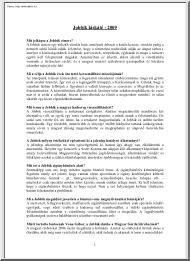Datasheet
Year, pagecount:2021, 1 page(s)
Language:English
Downloads:3
Uploaded:August 26, 2021
Size:582 KB
Institution:
-
Comments:
Attachment:-
Download in PDF:Please log in!
Comments
No comments yet. You can be the first!
Content extract
Summary A misunderstanding of the insurgency is at the heart of the difficulties facing the International Coalition in Afghanistan. The Taliban are often described as an umbrella movement comprising loosely connected groups that are essentially local and unorganized. On the contrary, this report’s analysis of the structure and strategy of the insurgency reveals a resilient adversary, engaged in strategic planning and coordinated action. The Taliban are a revolutionary movement, deeply opposed to the Afghan tribal system and focused on the rebuilding of the Islamic Emirate. Their propaganda and intelligence are efficient, and the local autonomy of their commanders in the field allow them both flexibility and cohesion. They have made clever use of ethnic tensions, the rejection of foreign forces by the Afghan people, and the lack of local administration to gain support in the population. In so doing the Taliban have achieved their objectives in the South and East of the country,
isolating the Coalition, marginalizing the local Afghan administration, and establishing a parallel administration (mainly to dispense Sharia justice and collect taxes). In recent months, a more professional Taliban have succeeded in making significant inroads by recruiting from non-Pashtun communities. These developments, and the strength of the insurgency makes the current Coalition strategy of focusing its reinforcements in the South (Helmand and Kandahar) risky to say the least. The lack of local Afghan institutions there will require a long term presence and therefore a need for even more reinforcements in the coming year. Meanwhile, the pace of Taliban progress in other provinces far outstrips the ability of the Coalition to stabilize the South. The Coalition should change the priorities of its current strategy, shifting resources to stop and reverse the Taliban’s progress in the North, while reinforcing and safeguarding the Kabul region or risk losing control of the entire
country
isolating the Coalition, marginalizing the local Afghan administration, and establishing a parallel administration (mainly to dispense Sharia justice and collect taxes). In recent months, a more professional Taliban have succeeded in making significant inroads by recruiting from non-Pashtun communities. These developments, and the strength of the insurgency makes the current Coalition strategy of focusing its reinforcements in the South (Helmand and Kandahar) risky to say the least. The lack of local Afghan institutions there will require a long term presence and therefore a need for even more reinforcements in the coming year. Meanwhile, the pace of Taliban progress in other provinces far outstrips the ability of the Coalition to stabilize the South. The Coalition should change the priorities of its current strategy, shifting resources to stop and reverse the Taliban’s progress in the North, while reinforcing and safeguarding the Kabul region or risk losing control of the entire
country





 Just like you draw up a plan when you’re going to war, building a house, or even going on vacation, you need to draw up a plan for your business. This tutorial will help you to clearly see where you are and make it possible to understand where you’re going.
Just like you draw up a plan when you’re going to war, building a house, or even going on vacation, you need to draw up a plan for your business. This tutorial will help you to clearly see where you are and make it possible to understand where you’re going.